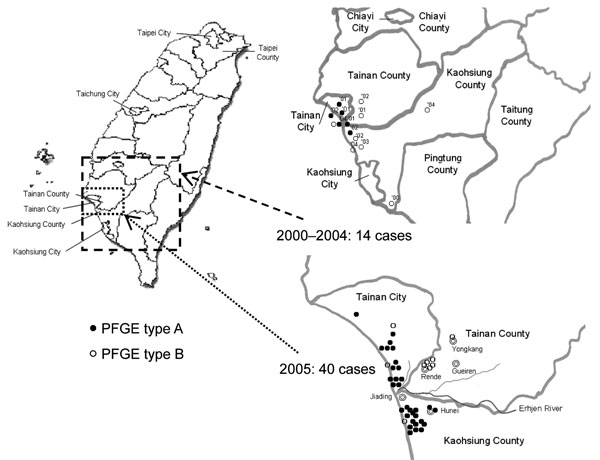Volume 13, Number 6—June 2007
Dispatch
Melioidosis Outbreak after Typhoon, Southern Taiwan
Figure 2

Figure 2. Geographic distribution of 14 sporadic cases of melioidosis, 2000–2004, and 40 clustered cases, 2005, Taiwan. Two pulsed-field gel electrophoresis (PFGE) genotypes (types A and B) of Burkholderia pseudomallei were present in southern Taiwan. The numbers in the upper right panel indicate year of isolation.
Page created: June 24, 2010
Page updated: June 24, 2010
Page reviewed: June 24, 2010
The conclusions, findings, and opinions expressed by authors contributing to this journal do not necessarily reflect the official position of the U.S. Department of Health and Human Services, the Public Health Service, the Centers for Disease Control and Prevention, or the authors' affiliated institutions. Use of trade names is for identification only and does not imply endorsement by any of the groups named above.